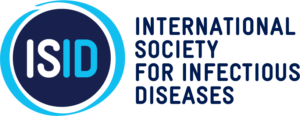ProMED Moderator Comment on the Global Polio Eradication Initiative in India
Moderator comment on ProMED: Marjorie Pollack
A key goal of the Global Polio Eradication Initiative (GPEI) is the total removal of all polioviruses from circulation. This includes the wild poliovirus (WPV), the oral polio vaccine virus (OPV), and all forms of vaccine derived polioviruses (VDPV). As stated in previous ProMED commentaries, the OPV2 virus has the greatest tendency for neurovirulence reversion into a cVDPV2 (circulating vaccine derived poliovirus type 2), with the neurovirulence reversion related to multiple passages through susceptible individuals — analogous to the original procedure used to develop the OPV2 virus through multiple passages to attenuate the WPV2 (wild poliovirus type 2). In order for this to occur, it requires a sizable population of susceptible individuals to the type 2 poliovirus. As WPV2 transmission has been interrupted since 1999 when the last case was confirmed in Aligarh, northern India in 1999, in the absence of vaccination with the OPV2 component, there is no longer a source for naturally acquired antibodies to the type 2 poliovirus. Hence, unless the population maintains a high enough vaccination level to permit a functional herd immunity (where a virus cannot find a susceptible host), there remains a risk of development of cVDPV2 when the OPV2 component is included in vaccination activities. To prevent this occurrence, there was a worldwide shift to the use of bivalent OPV, without the OPV2 component, and simultaneous inclusion of a single dose of inactivated trivalent polio vaccine (IPV) beginning in April 2016. Unfortunately, the worldwide needs for IPV exceeded the vaccine production capabilities for several months so a cohort of poliovirus 2 susceptible children occurred, many of whom were not captured during subsequent vaccination activities. In a country with a population above 1.3 billion (2017 World Bank estimate https://data.worldbank.org/indicator/sp.pop.totl), and an estimated birthrate of 19/1000 population (https://data.worldbank.org/indicator/SP.DYN.CBRT.IN), this brought the 2016 cohort available for vaccination to approximately 24.7 million children, a sizeable potentially susceptible population. Putting this into perspective, Uttar Pradesh, one of the states where this vaccine was distributed and used, had an estimated population of 218.4 million in 2016 (http://indiapopulation2018.in/population-of-uttar-pradesh-2018.html), with an estimated crude birth rate of 26.2/1000 population (http://www.censusindia.gov.in/vital_statistics/SRS_Report_2016/7.Chap_3-Fertility_Indicators-2016.pdf), with an estimated number of newborns in 2016 of 5.7 million.
That being said, the India government has been very diligent in maintaining their polio free status, and vaccination activities have continued with full force. Summary, if this vaccine hasn’t reached pockets of unimmunized individuals, there shouldn’t be any negative repercussions of the use of this vaccine… time will tell.
